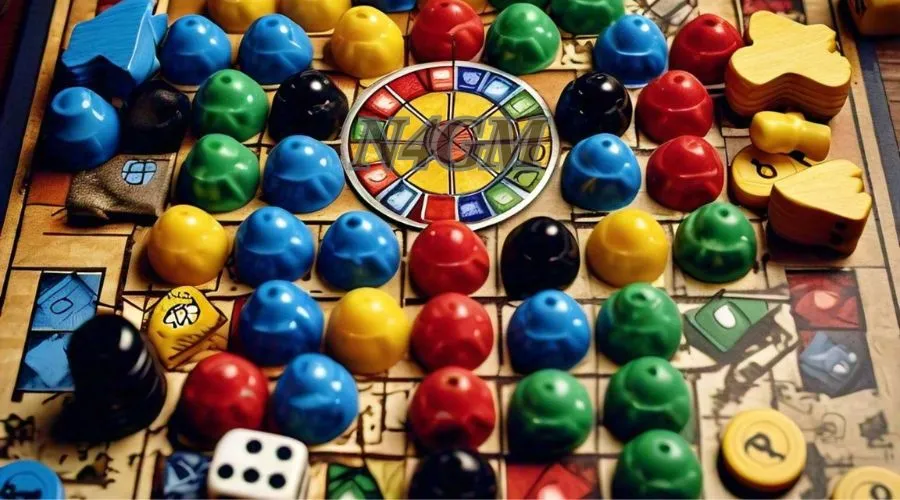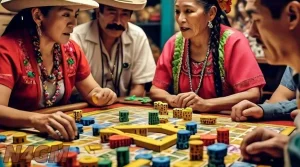Aggravation is a classic board game with a simple yet thrilling aim—to frustrate your opponents and emerge victorious. The game, created in 1962, offers hours of fun for kids and grown-ups alike, making it a perfect choice for family gatherings or a lively evening with friends.
Players take turns to roll the dice, move their marbles, and strategically bump their opponents’ pieces back to the start, ensuring a constantly shifting path to victory.
The basic rules are straightforward, but what makes the game so aggravating is its unpredictable nature—just when you think you’re ahead, a well-timed play can set you back.
Designed for six players or fewer, Aggravation Board Game encourages clever strategy and collaboration through its team variations, adding depth and excitement to the marble race.
Whether you’re playing a hand-me-down version from Grandma’s closet or picking up a new one from store shelves or a garage sale, the instructions are easy to follow.
However, losing them is common, as with many hand-me-down games, but don’t fear—rules can often be found online or re-created from memory with ease. The timeless name says it all: Aggravation is all about keeping your cool under pressure and outsmarting your opponents for the win.
Origins Of The Game
Aggravation was born in 1962, inspired by an older game called Wahoo. Wahoo was often played on handmade wooden boards. Families made them using simple tools. This predecessor of Aggravation focused on marble racing and strategy. It laid the foundation for the game we know today.
1. From Homemade Boards To Store Shelves
In the early days, Aggravation was a DIY game. It was often made at home and passed down through generations. However, its commercial launch transformed it into a household name. By the 1960s, it was widely available in stores. It offered a refined version of the game that anyone could enjoy.
2. A Nostalgic Favorite
Aggravation quickly became a family favorite. It appeared at garage sales and in Grandma’s closet as a cherished hand-me-down. The name reflects the game’s playful tension.
“Aggravation” comes from the frustration of having your marbles sent back to the start. This mix of luck and strategy made it a timeless addition to game nights for both kids and grown-ups.
3. Enduring Legacy
Even decades later, Aggravation remains popular thanks to its simplicity and versatility. The ability to “bump” opponents’ pieces, and its nostalgia, keep it relevant for today’s families. They preserve its charm from the past.
Setup
1. Preparing The Board
To set up Aggravation, start by placing the board on a flat surface where all players can easily reach it. Ensure the marble slots and paths are clearly visible. The board has a track where players race their marbles to their home base. They must avoid being bumped back to the start.
2. Assigning Marbles
Each player picks a color. They take four or six marbles, depending on the game’s variation. Place all your marbles in the starting area designated for your color. This is your “base.”
3. Choosing A First Player
Roll the dice to decide who will go first. The player with the highest roll begins the game and turns clockwise.
4. Team Play Option
If playing in teams, divide players evenly. Then, strategize to help your teammates and hinder your opponents. In this variation, you can use specific moves to benefit your team while still aiming for victory.
5. Additional Tips For Smooth Play
- Keep the instructions handy for reference.
- Make sure all players know the rules, especially any house rules or variations you might want to use.
- If playing with younger children, simplify the game. Focus on fun, not complex strategies.
Aggravation Board Game Rules
The objective of the Game
The primary goal in Aggravation is to move all your marbles from your base to your home area. You can bump opponents’ marbles back to their base. This adds a competitive edge to the game. The first player to get all their marbles home wins.
Starting the Game
- Players must roll a 6 on the dice to move their first marble out of the base.
- Once a marble is out, you can roll the dice on your turn to move that marble along the board.
Moving Marbles
- Players move their marbles forward based on the number rolled on the dice.
- If a marble lands on a space occupied by an opponent’s marble, that marble is sent back to its starting base.
Shortcuts and Safety Zones
- The board has shortcut spaces. They let players move their marbles faster toward home. Use these strategically to gain an advantage.
- Safety zones near your home base protect your marbles from being bumped.
Special Dice Rolls
- A 6 gives you an extra turn. You can move a new marble out or advance an existing one.
Team Play Variation
In team play, partners work together to get all their marbles home. You can block opponents, protect your teammate’s marbles, or help them move along the board.
Winning the Game
The winner is the first player (or team) to successfully move all their marbles into the home base.
Key Rule Reminders
- You cannot jump over your own marbles, so plan your moves wisely.
- If no valid move is available, you must forfeit your turn.
- Follow the house rules if additional variations are agreed upon before starting.
Advanced Strategies To Master Aggravation
- Plan Ahead: Prioritize getting marbles out of the base. Anticipate moves to block or advance.
- Bump Smartly: Target marbles near their home base to maximize setbacks. But, avoid exposing your own.
- Control Shortcuts: Use shortcuts wisely, ensuring the path is clear of opponents.
- Balance Offense and Defense: Protect your marbles while disrupting your opponents’ progress.
- Leverage Rolling a 6: Use the extra turn to either move a marble out or advance one strategically.
- Team Play Tips: Coordinate with teammates to block, clear paths, or bump strategically.
- Observe Opponents: Anticipate their moves to counter effectively.
- Stay Cool: Keep calm during setbacks to make better decisions.
- Adapt to Variations: Adjust strategies for house rules or specific gameplay variations
Conclusion
Aggravation is more than just a marble race; it’s a game of wit, patience, and clever moves. This guide will help you, whether you’re a pro or a newbie. It will boost your confidence and help you enjoy every moment. So gather your friends, set up the board, and let the fun begin!







